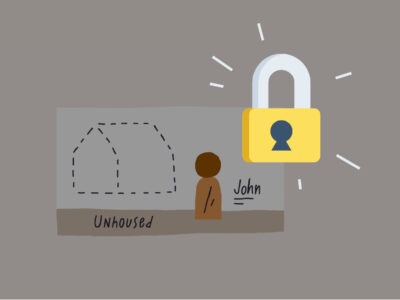As we continue to inch closer to the end of 2015, the national target date for ending veteran homelessness, communities across the country are doing whatever it takes to accelerate the number of veterans being moved into housing in order to reach this goal. Yet, many people remain confused about what exactly it means to end veteran homelessness and how to measure whether or not a community has achieved functional zero.
Bottom line: ending veteran homelessness shouldn’t look or feel different depending upon where you live or who’s in office. It should be easy for everyone to assess the facts and quickly arrive at an objective, actionable conclusion.
To encourage this shared accountability, every community in Zero: 2016 has agreed to use one concise, measurable and easily digestible definition of functional zero:
At any point in time, the number of veterans experiencing sheltered and unsheltered homelessness in a community will be no greater than the average monthly housing placement rate for veterans experiencing homelessness in that community.
In other words, a community that reaches functional zero never has more veterans experiencing homelessness than it has proven it can house in an average month.
This graphic shows us how it might look to reach functional zero in a community over time. Here, we see that the number of veterans experiencing homelessness is steadily decreasing as the months progress and the community continues to house veterans. At the same time, the community’s average veteran housing placement rate updates on a monthly basis. As a result, the community enters June with 3 veterans experiencing homelessness and an average monthly housing placement rate of 3.2, reaching functional zero (3 < 3.2 = Functional Zero).
It’s worth noting a couple of things here:
This definition of functional zero includes ending homelessness for veterans living in VA Grant and Per Diem programs (GPD) and other federally funded transitional housing programs who wish to exit to permanent housing.
-
The federal government still counts veterans living in these programs as homeless. That means they will continue to show up in annual Point-in-Time counts and any other enumeration of veteran homelessness. An end to veteran homelessness for every veteran except those living in GPD and other transitional programs is not a true end to veteran homelessness.
-
The stated goal of GPD and other transitional programs is to end homelessness for veterans, and they can’t do that if they are kept separate from the rest of a community’s work to achieve the same outcome. GPD and other HUD and VA-funded programs to end veteran homelessness need to work together at the same table to accomplish their shared aims. This means figuring out how to give each veteran a real choice about their path to housing, including long-term treatment programs if that is their preferred option, and being willing to bypass such programs for veterans who choose to go immediately into an evidence-based permanent housing option.
The definition for functional zero differs slightly from the federal government’s criteria for ending veteran homelessness, but it does not differ in spirit.
-
The U.S. Interagency Council on Homelessness (USICH) has emphasized that communities must develop a coordinated system with the resources to reach and sustain an end to veteran homelessness.
-
If your community has routinely housed more veterans each month than presently remain homeless on your streets and in your shelters, you’ve likely satisfied the federal criteria by showing a measurable and ongoing systemic ability to maintain functional zero, even as new veterans encounter crises and become homeless.
-
Ideally, to prove you’ve satisfied the federal criteria for ending veteran homelessness, you would want to make an objective, data-driven case. There is no simpler way to do that than to maintain a continuously updated by-name list of veterans experiencing homelessness in your community and to be able to document that your list is smaller at any given time than your monthly housing placement rate.
The definition of functional zero is not an abstract idea. It is designed to help you take action.
-
Definitions matter because they influence behavior. This quality is far more important than academic debates about the “rightness” or “wrongness” of any particular definition. Your community and others will adjust your strategies in order to reach functional zero, and those adjustments will be based on your understanding of what functional zero means.
-
The Zero: 2016 definition of functional zero is designed to help you adopt four key strategies:
-
Develop and maintain a continuously updated by-name list of all veterans experiencing homelessness
-
Track your monthly housing placement rate and improve it toward a clear goal
-
Know in real time if you are at functional zero, rather than waiting on your Point-in-Time count
-
Build your local system to prioritize permanent housing opportunities and ensure that every resource you have (VASH, SSVF, GPD, etc.) aligns toward that goal
-
Getting clear about functional zero allows a community to focus on the concrete metric that matters — the number of people housed each month, which is to say, the proven performance of a community’s housing system. The Zero: 2016 definition of functional zero is indicative of a strong housing system capable of ending and maintaining an end to veteran homelessness.
At the end of the day, we know that what gets measured gets done. By rallying together around a shared, measurable goal that is universally understood and agreed upon, Built for Zero communities are proving that ending homelessness is measurable and absolutely possible.




